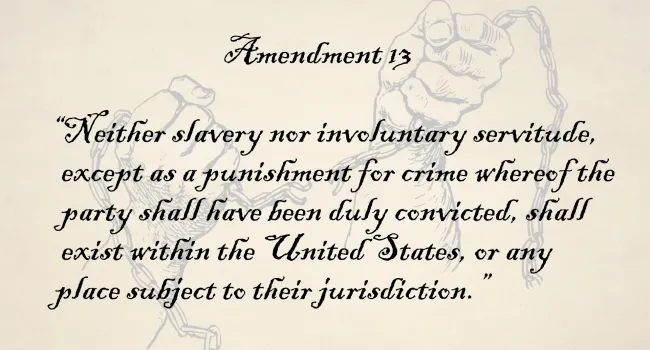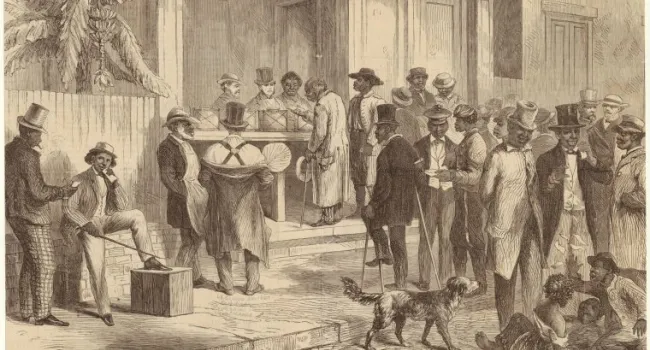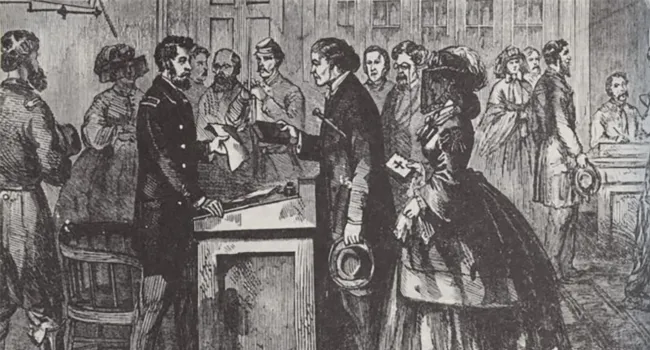After the Civil War, the U.S. had a long road ahead for rebuilding the country. In addition to fixing the country's infrastructure, the U.S. needed to mend the social and political inequities many African Americans faced. The 13th, 14th, and 15th Amendments to the Constitution were created with the purpose of correcting these inequities, however, resistance in both the state and federal levels caused the "Great Experiment in Biracial Democracy" to fail. Despite efforts by Republicans to expand democracy, and grant more rights to "Freedmen", African Americans would not see full equal rights until almost a century later, with the Civil Rights Movement.
Standards
- 4.5.CO Compare the roles of various groups on Reconstruction.
- This indicator was developed to encourage inquiry into founding principles as viewed through this period of federal government involvement, the development and realignment of a new labor system not based on a system of slavery, and the significant political realignment of the South.
- 4.5.P Summarize Reconstruction as a turning point in American history.
- 4.5.CX Contextualize the economic, labor, political, and social conditions in South Carolina during the period of Reconstruction.
- This indicator was developed to encourage inquiry into how Reconstruction resulted in the foundation for the struggle for civil rights. This indicator was also developed to foster inquiry into Reconstruction Era policies such as Constitutional amendments, black codes, and Jim Crow Laws.
- 4.5.E Analyze multiple perspectives of the economic, political, and social effects of Reconstruction on different populations in the South and in other regions of the U.S.
- This indicator was designed to encourage inquiry into the continuities and changes of the experiences of marginalized groups such as African Americans, Native Americans and women, as the U.S. expanded westward and grappled with the development of new states.
- This indicator was developed to encourage inquiry into the debates, heightened by Westward Expansion, over federal and state power concerning slavery, and the government’s role in protecting and securing natural rights.
- This indicator was designed to encourage inquiry into the economic implications of the expansion of the rice and cotton industries. This indicator was also developed to promote inquiry into Westward Expansion, the mutually beneficial impact of cotton
- This indicator was developed to encourage inquiry into the changes that served as a catalyst for Reconstruction. The indicator was also designed to promote inquiry into how these actions affected the economic, political, and social conditions in the South.
- 8.3.CC Analyze debates and efforts to recognize the natural rights of marginalized groups during the period of expansion and sectionalism.
- This indicator was developed to encourage inquiry into how the former planter class, African Americans, women, and others adjusted to, gained, lost, and/or regained position and status during Reconstruction. This indicator was also written to foster inquiry into how South Carolina worked with a stronger federal government and expanding international markets.
- 8.4.CC Analyze continuities and change in the African American experience in the period of Reconstruction and Jim Crow eras within South Carolina.
- This indicator was developed to encourage inquiry into the causes of American expansion, such as a growing and diversifying population and the expansion of the plantation economy. This indicator promotes inquiry into the relationship between sectionalism and political compromise, culminating in the Civil War.
- USHC.2.CX Contextualize the perspectives on the role of the federal government in securing natural rights during the period 1830–1877.
Resources
You need to be logged in to listen to view this content. Create an account now; it's quick, easy, and free!
Log In to View





